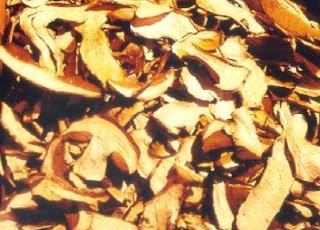
Rice is cultivated commercially in the Po Valley, the northern part of Italy where it has the perfect environment and climate: flat lands, abundance of water, and humidity. Risotto is an Italian dish and is quite popular all over Italy with the different regions having their own specialties.
Risotto Milanese, very popular in Milan (as the name suggests) and the rest of the Lombardia region, is said to go as far back as 1574 when the Duomo di Milano was being built. The stained glass window paint seemed to have been tainted with saffron to obtain a more brilliant color. So much fuss was made about the colour that in one of the banquets, saffron was added to the rice to make it look like the stained glass. The rice was so good that the saffron became a staple addition.
I like preparing risotto for dinner since it is a one-pot dish. All you need to do is prepare your ingredients and add them at the right time! Here is what you need to make risotto ai funghi porcini:

250g Italian Risotto Rice such as Arborio or carnaroli
About 50g of dried Porcini Mushrooms
1 ½ cups full bodied Italian Red wine, chicken Stock
1 medium onion - sliced
1 handful of fresh parsley – chopped
2 tablespoons of Olive oil
Salt and pepper to taste
About 50g of dried Porcini Mushrooms
1 ½ cups full bodied Italian Red wine, chicken Stock
1 medium onion - sliced
1 handful of fresh parsley – chopped
2 tablespoons of Olive oil
Salt and pepper to taste
Start off by soaking the funghi in some hot water and let them soak until the mushrooms have softened.
Now, in a pot or a wok, fry the onion in the olive oil and once it has softened, add the rice (raw) and stir. Coat the rice with the oil and start adding the stock a little at a time until the rice starts to soften, it is best to use a ladle or a little jug to calculate how much stock you are adding. It is important that the stock is completely absorbed before adding any more.
Add the wine to the rice and once the rice is nearly done, add the drained mushrooms.
When you are draining the mushrooms, reserve the water and straining it through a fine sieve and add the water to the rice. Again it is important that any liquid is absorbed before adding any more.
Finely add the chopped parsley and serve immediately.

